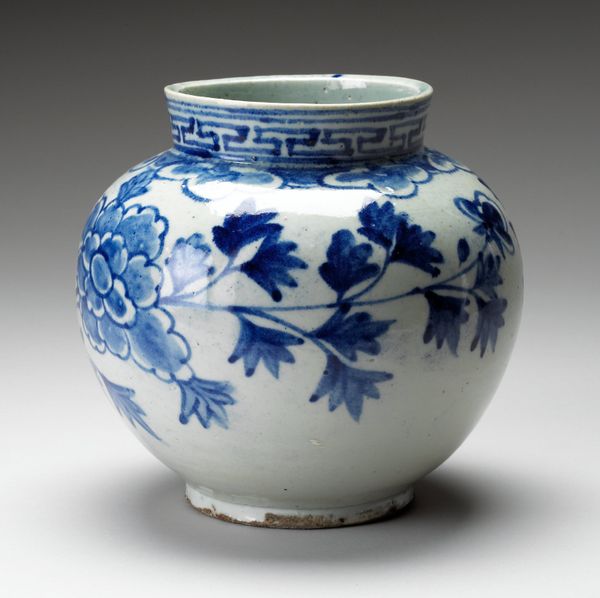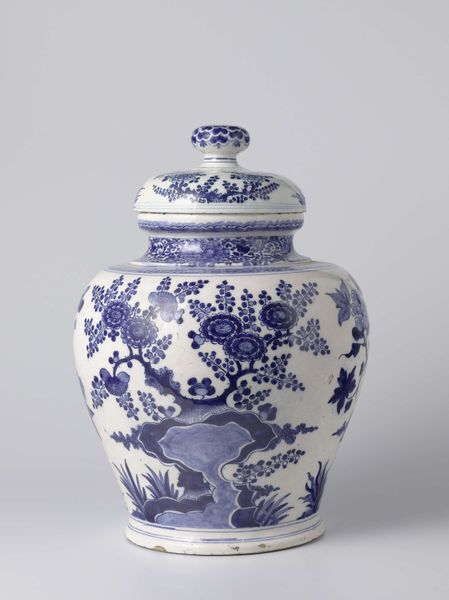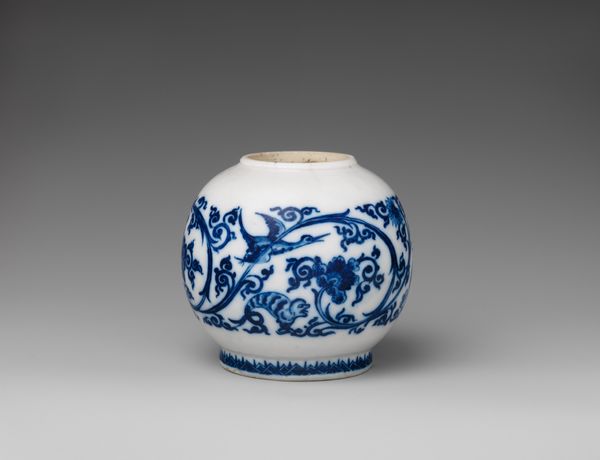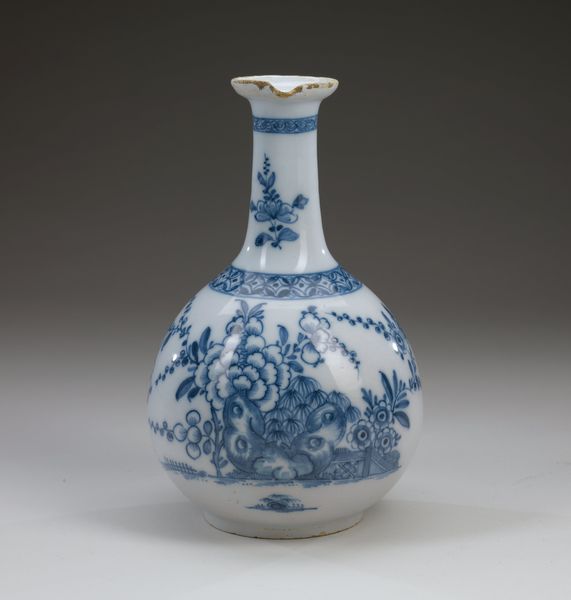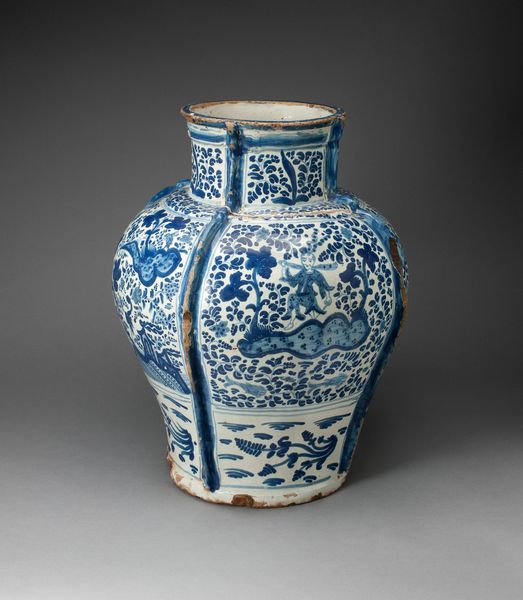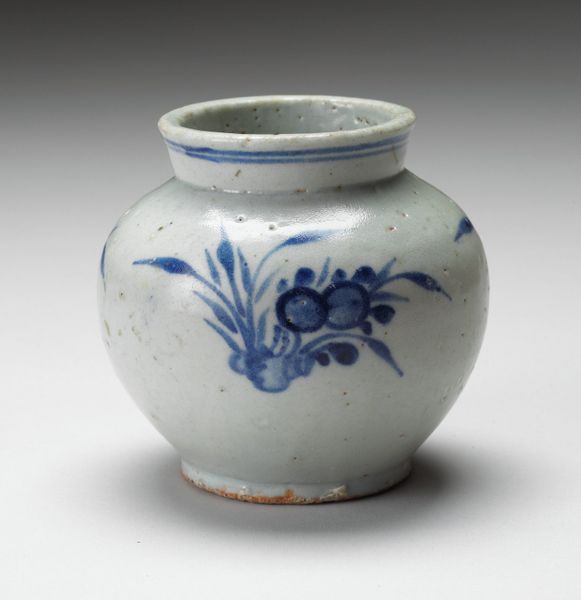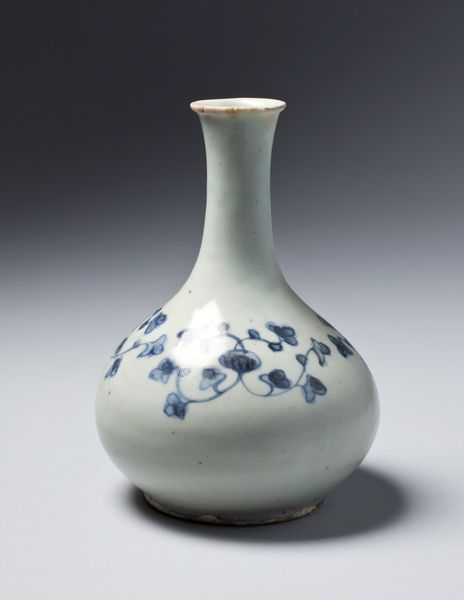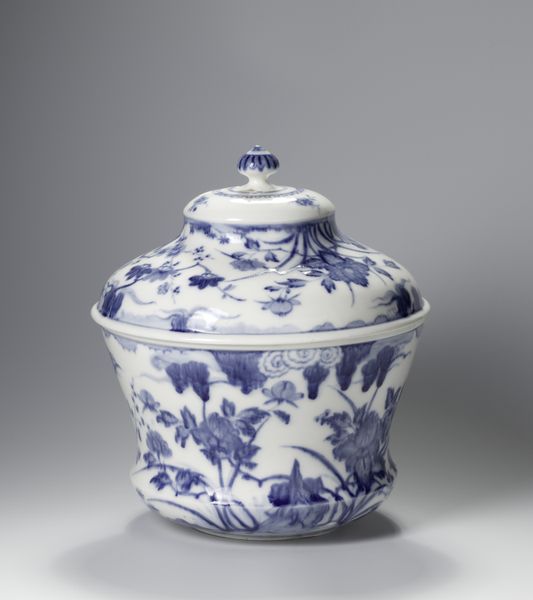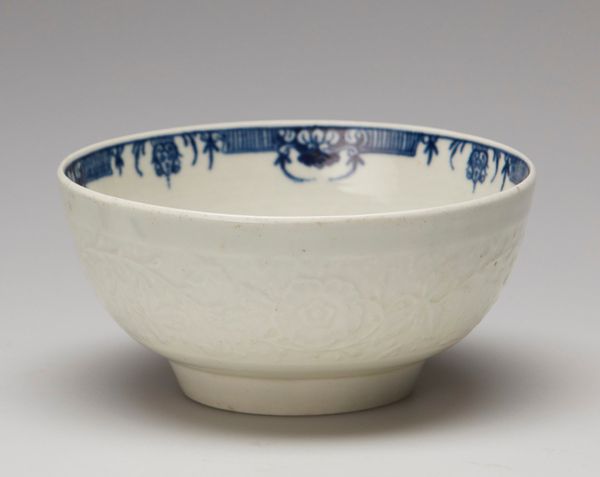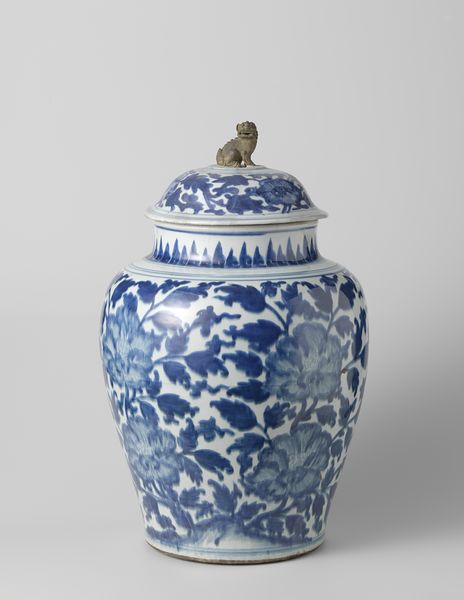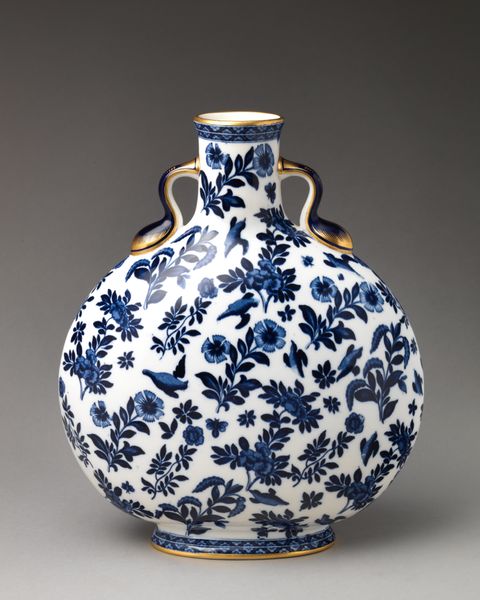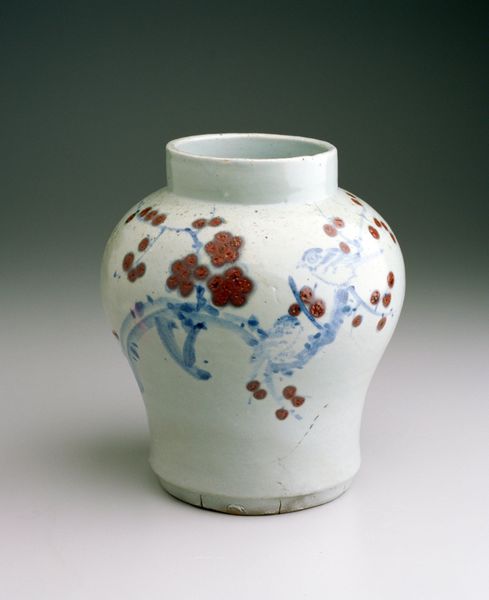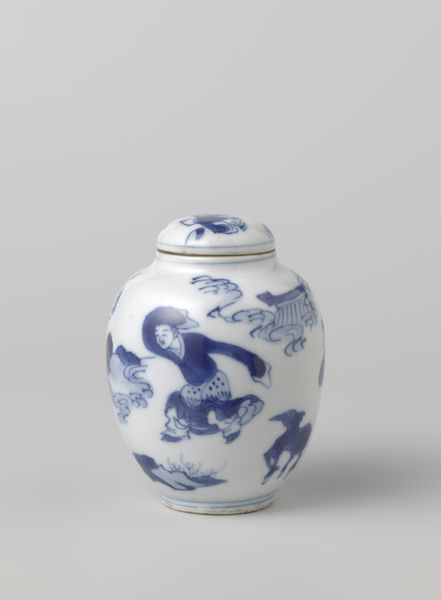
ceramic
#
asian-art
#
ceramic
#
ceramic
#
decorative-art
Dimensions: 6 5/16 × 6 13/16 × 6 13/16 in. (16.03 × 17.3 × 17.3 cm)
Copyright: Public Domain
Curator: This object is a ceramic jar with peony design. It dates to the 19th century and is currently held in the collection of the Minneapolis Institute of Art. Editor: It’s deceptively simple, isn't it? At first glance, it's a pleasant, decorative object. But that porcelain smoothness… I immediately think about the intense labor that went into shaping and firing the clay. Curator: Precisely. Understanding the production illuminates so much. Peonies, traditionally a symbol of wealth, honor and nobility, but who had access to them? How did class dictate production practices and ultimately inform what was aesthetically valued? Editor: Yes, consider the specific shade of blue. Cobalt, traditionally imported, making its use on ceramics a signifier of wealth and access to trade networks. This speaks volumes about the status and the economic realities of those creating and consuming this object. The cobalt becomes an historical indicator. Curator: The choice of peonies speaks volumes. Was this designed for a wealthy merchant perhaps looking to elevate his status? Or perhaps even produced for the imperial court, or emulating courtly taste? The symbolic weight interacts with historical power structures, creating complex narratives. The surface, while smooth, hints at all those invisible dynamics. Editor: It also forces us to consider the roles of the artisans themselves, their techniques passed down through generations. Who were these artisans, their gender, race, were their contributions valued beyond pure function and what might those dynamics mean to a maker of today’s crafts? The social dimensions of creation are inextricable. Curator: Exactly. It becomes a focal point for examining issues of craftsmanship, commerce, social stratification, and gendered labor practices – all intertwined and expressed through form and motif. Thank you, this vase provides a powerful example of why contextualization deepens engagement. Editor: Absolutely, focusing on the means of production offers fresh pathways into art history that move past aesthetics, revealing the intricate and complicated labor ecosystems underpinning so-called “high art.”
Comments
No comments
Be the first to comment and join the conversation on the ultimate creative platform.
